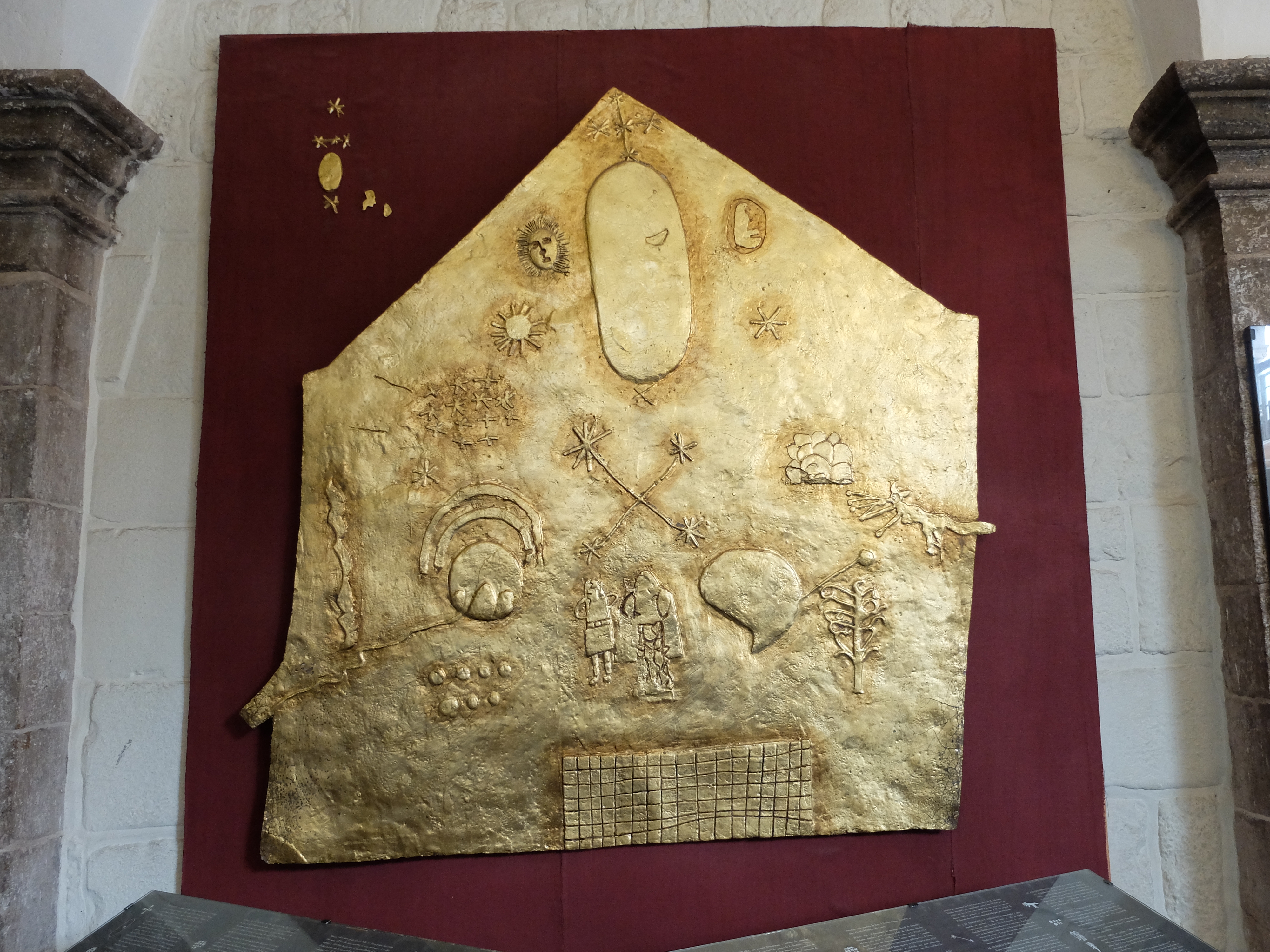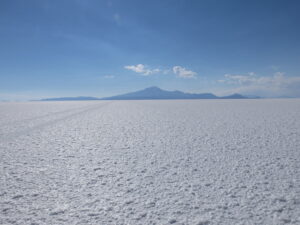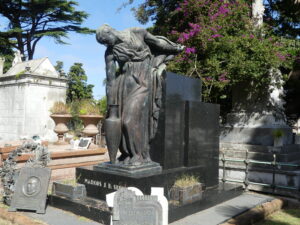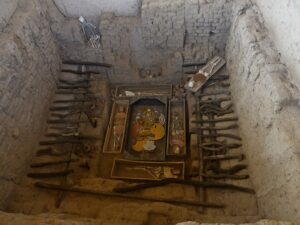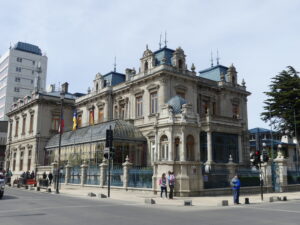(NOTE: This articles is longer than our usual, but the impressive Inca history and culture merit the length…and more.)
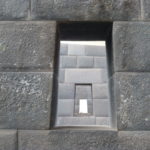
In 1532, the Spaniards arrived in Peru with hundreds of soldiers. They soon destroyed a sophisticated Incan empire stretching from Colombia to Argentina, comprising millions of people and defended by an army of 50,000 to 100,000. For the Inca, it was a period of “pachakuti,” a point of crisis or transition for the people
How did the Spaniards, whose primary goal was harvesting natural resources like gold and silver, conquer these powerful Incas? The empire had already experienced a self-inflicted pachakuti, a civil war between the two royal heirs of the former king, that undermined unity and had pre-occupied the military. The Spaniards had two combat advantages, firearms and horses. And they had the weapon of disease, especially smallpox, which spread rapidly through the unprotected indigenous populations after Columbus and his followers hit the Caribbean shores forty years earlier.
Ironically, the Spaniards were also helped by the expansion of the Inca empire over several hundred years, consolidating the smaller tribes and building on their artistic/technical/religious knowledge. The invaders only needed to defeat one group, not many. They also recruited to their side tribal societies disaffected under Inca control, as well as the brother that lost that civil war to the last Inca ruler, Atahualpa.
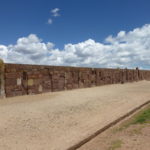
The Incas – or strictly Quechua people, as Inca, “leader,” just designated the ruling class – were no strangers to pachakuti. The origins of the tribe were the Tiwanaku, who thrived near the waters tailing away from Lake Titicaca (the highest lake in the world) toward La Paz, Bolivia.
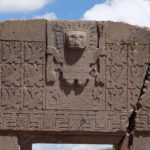
Over more than 500 years, the Tiwanaku had established a high level of religious practice, social organization, scientific knowledge and architectural skill. They had already mastered what is often touted as an Incan capability the art of constructing earthquake-proof buildings, angling the walls, and honing large stones to fit snugly into each other. They even used a kind of lego system, with odd shaped pieces fitted together, often held fast by bronze clamps invisible from the outside.

But around 1200AD, a natural pachakuti destroyed the world of the Tiwanaku. Lake Titicaca suddenly sent a destructive tsunami of lake water over the fields, central city and an unsuspecting population, most likely because of a volcanic eruption below. It was a watery Pompeii that left only remnants of the grand capital city and buried the rest.
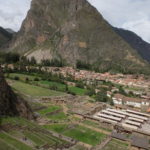
The survivors of that cataclysm scattered, to the lowlands or mountains. The remnants of the military regrouped in Cuzco to the north (in Peru), and founded there the royal capital of what became, over 300 years, the Inca empire. It was an ideal spot, with plenty of water for irrigation and moderate temperatures, plus it was adjacent to the highly productive “Sacred Valley” of the Urubamba River.
The Quechua, by heritage and training, were highly organized, hard-working and disciplined. Particularly under the aptly named and long-lived leader Pachakuti of the 15th century AD, they not only advanced the accomplishments of the Tiwanaku culture, but tried to build on the best of the many tribes they added to the empire.

Early on, the capital of Cuzco was connected to other Inca lands in a quasi-religious system that would have made for an astonishing map. Cuzco – or “navel” in Quechua – was the center of a virtual cross, the Andean cross or chacana that the Tiwanaku also held sacred. The topographical cross was oriented according to compass points, whose extended lines set the position of outposts for defense, pilgrimage stops and commercial centers.
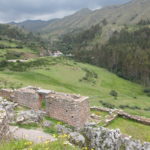
You can see one of these outposts in pretty good shape near Cuzco at Puca Pucara. You can readily observe how it linked to other outposts and stations, via visual contact with nearby hilltops and the vaunted, swift couriers that raced along connecting trails – another vital system of the Incas. Extending beyond these were a large network of sacred sites systematized in an array of lines radiating from the navel of Cuzco.
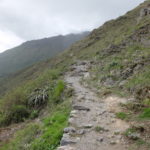
The Andean cross epitomizes many of the strengths of the Quechua as well as the Tiwanaku, as well as the essence of its religion and culture.
Based on observation and respect to the natural world, the cross’s four compass points correspond to the four basic elements: fire/east, air/north, earth/south, water/west. These and other natural dualities (man/woman, light/dark, and so on) had been at the core of earlier tribal religions.
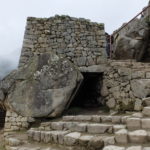
At Machu Picchu, smaller temples honor each of these four elements, while the main temple is dedicated to the sun god so central to Inca religion. Similarly, there were four virtues exalted by the Incas:
- Knowledge
- Love
- Work
- Community/sharing
The last one was so strong that it has survived in the descendants of the Incas to this day. People still pool their efforts in collaborative work on each other’s farms. And certain days are allocated to community service such as repairing of irrigation channels or street building. We saw this communal work several times in our travels.

The unusual aspect of the cross is that each quadrant features three points. These points represented central religious and ethical concepts. The world known to humans was tri-partite, consisting of sky, earth and underworld. Each realm had its symbol: the condor ruled the sky and flew to the heavens. The snake represented the underworld, not a hell, but a place to which all returned in death as the first step toward passage on to the next world. That’s why the snake is etched into many Inca and pre-Inca buildings, particularly funerary structures.

In between sky and underworld prowled the puma, which symbolized the earthly realm, as well as earthly power under the sway of the Incas.
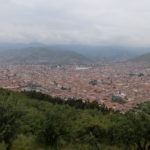
Some say that Cuzco’s topography attracted the founders of the empire because it resembled a puma in its natural layout between two rivers, with the puma’s head as the hill overlooking the valley.
This trinitarian mentality had other correspondences. For example, the three main climate zones of the empire were highland, lowland and jungle. The three main classes of society: Incas, the leaders; soldiers, the defenders as well as force for spreading the empire; and workers, such as farmers and builders. The body – and sections of a city like Machu Picchu – held three centers, head, heart and genitals: mind/knowledge, love/passion, fertility/sexuality.
The Inca ethical code was full of commandments, but these were condensed into another set of three, to which pilgrims and priests would often commit themselves at sacred sites:
- Don’t be lazy, ama quella
- Don’t steal, ama sua
- Don’t lie, ama llulla
Similarly, the three points of each quadrant on the Andean cross represented the three foundational bodies of knowledge that formed the Quechua’s core strengths and contributions to the empire:
- Astronomers
- Builders
- Farmers
Oddly, the Quechua artistic achievements seem to be overshadowed by earlier tribal abilities. Perhaps this was because they were soldiers at heart.
None of these core capabilities arose suddenly with the Quechua people, but evolved over centuries among the tribes of modern-day Peru, Bolivia and other lands in the empire. The genius of the Incas was to perfect the technological skills of those it subsumed into their realm.
Over several months travel around the Inca lands, we learned a lot about these three capabilities from touring the old Inca and pre-Inca sites. Here are some insights we gained.
The Astronomers and Priests – Forecasters and Religious Guides
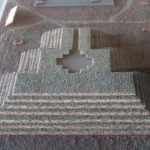
For a people who relied on agriculture and trade along their commercial trails, it was crucial to know the changes of seasons, predict the onset of rains, and identify the best planting times. This was a priestly function for they learned how to read the skies for signs, and could perform the proper rituals and sacrifices to implore the gods to deliver on the community’s needs.
A large well in the shape of the Andean cross topped the central pyramid of the Tiwanaku’s capital city. Its purpose was to mirror the stars for better study, while the pyramid and other temples served for the rituals to influence divine action.
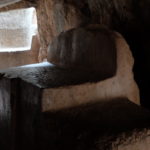
These rituals evidently included sacrifices of animals like llamas. These sacrifices were considered a kind of payback or return of bounty to pachamama, or mother nature, and the other gods in return for future benefits.
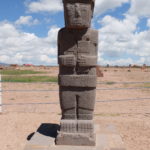
That’s also why the dead needed to be buried, to return their earthy existence back to nature. There’s some dispute about the practice of sacrificing virgins and children (who would have been doped up for the occasion), though these might have been more linked to the ceremonies around the deaths of leaders.

The goal of such rituals was to maintain – or restore – harmony…harmony with the gods, within the community and with the land. But the goal of harmony affected other activity, beyond sacrifices and rituals. The Inca buildings often integrated rough, natural rocks into their structures.
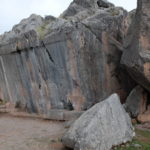
Machu Picchu’s unusual site and the buildings themselves illustrate this idea, as does the sacred ritual site called Q’engo near Cuzco, a partly hidden warren of natural and sculpted rock.

The miraculous flow of underground springs as they emerged from the ground were sacred, a gift from the snake perhaps. Palaces and pilgrimage sites were often founded at these springs.
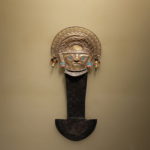
As for their cosmology, the Incas inherited and respected the gods central to prior tribes – such as Virucocha the creator, the gods of the sun and moon, weather-bearing gods, and pachamama. However, they elevated the sun god, or ‘inti,’ to higher importance, and adorned their temple walls, icons and niches with the sun’s physical representation on earth, gold. It’s no wonder the Spaniards went a bit wild when they found all that, and wrecked much in their search for more.
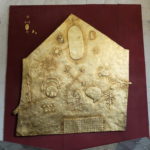
The rosetta stone of their religious beliefs has been lost, but a copy sits within the Dominican church built over the remains of the Incan Sun Temple in Cuzco. It depicts the different realms represented in the figure of the Andean cross, and arrayed around the astrological Southern Cross at the center of the panel. Dualities dominate – like the sun and moon near the top, the puma and snake in the middle, man and woman nearby flanked by the earth mother and the sea deity, as well as symbols for summer and winter.
Yet, as with many other religions, these gods were manifestations of one invisible god, beings both more visible and comprehensible. Perhaps that made Christianity a bit less mysterious to the people when the Spanish priests began their conversions, though much of the new religion otherwise made little sense to the indigenous. The last ruler, Atahualpa, disdained it and lost his life for his denials.
(To read about the Inca creation myth and ethical requirements fulfilled by a visit to Isla del Sol on Lake Titicaca, see the article Lighting up the Dark: The Pilgrims of Isla del Sol)
Builders – Constructors of roads and buildings
Quechua engineers advanced the craft of building to majestic proportions, examples of which abound in Cuzco and the neighboring valleys. With roads, imperial buildings and sacred temples they projected their might to other tribes, while they also facilitated the imperial contributions of astronomers, priests, soldiers, and farmers.
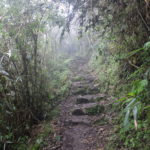
As with the Romans, roads were critical to sustain a far-flung domain, covering nearly the length of South America, around 6000 kilometers.

The tribal villages, Inca outposts and farms were connected by an extensive network of roads: commercial roadways along which llamas carried agricultural and other goods for barter; stone-covered Inca trails (many of which have endured till now) used for military purposes and those renowned messengers, who ran through rain, sleet and maybe dead of night, to carry notes from place to place; and the royal roads for exclusive use of the Incas, the leaders.
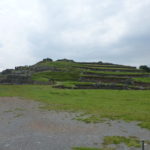
Nor was the architectural skill of the Tiwanaku lost in its flood, as we can still see upon the puma’s head overlooking Cuzco, at the ruins of an extensive sacred site known as Sachsay Huaman, the Royal Head – or at the impressive Temple of the Sun in Cuzco.
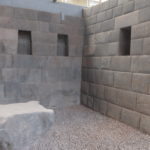
The Quechua fully mastered the know-how to hone massive stones with fine precision, and align them with other transported stones and rocks in place so that the unmortared seams are impeccably fitted, while pitching the walls at a 13 degree angle for strength and endurance in earthquakes – or other pachakuti. “Finer than a modern machine can do,” we were told, and impenetrable to the slimmest reed.

The huge stones are not uniform in size or shape, but fitted together with irregular seams and notches for extra strength. Guides like to tease visitors with speculations about ancient tools we know nothing about or mysterious sources of arcane knowledge, even about the origin of the stones themselves. But most estimate that the Inca, just like the Tiwanaku and somewhat like the Egyptians or Mayans, combined time, patience and hard work – as well as slave labor – to make these impressive buildings rise.
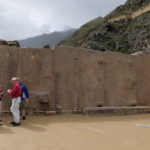
They deployed various building methods in their cities. At Machu Picchu, archeologists have identified 18 different styles of construction. The central temple there, the Sun temple, the main buildings at Sachsay Huaman, and the temple overseeing the terraced gardens of Ollantaytambo in the Sacred Valley, among others, all demonstrate that the largest stones and finest architectural craftsmanship were reserved for the most important buildings.
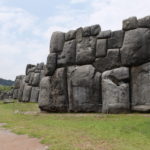
At Sachsay Huaman above Cuzco, we realized that these enormous stones must have seemed as truly imposing to visitors as they still do – the work of giants, not mere human beings.
Yet, it seemed odd to us at first, but one thing they didn’t build to endure were the roofs, slightly constructed of timber and thatch and bamboo. Light in weight and breathable, they were functional, not monumental.

Aside from the roofing, most of those splendidly engineered imperial buildings would still stand intact today had the Spaniards not torn them apart, either re-using the stones for colonial buildings or supplanting them with churches to project their own dominance over the people. In central Cuzco, many current houses stand on foundations of these stones, and new ones continue to be uncovered.
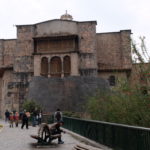
The Dominican church and monastery was built atop the Inca Temple of the Sun there. Except for some stones evident in the church’s foundation, the walls of the Temple had disappeared until 1950 when an earthquake suddenly uncovered them intact as parts of the church collapsed. Its impeccable stone construction of black granite is now some of the finest Quechua architectural work we can still see.
As they annexed tribes and capital cities to their empire, the Inca followed a different approach to pre-existing buildings: instead of tearing them down, they worked with what was already there and tried to enhance or perfect it – just as they did in other technological areas.
Farmers – Masters of agriculture, irrigation and trade

The Incas inherited thousands of years of tribal experimentation in terracing the hillsides to grow crops. They perfected these techniques with retaining walls, layers of soil and filtration stones and extensive irrigation systems to collect water, distribute it and control it. They took advantage of every usable meter of land, however steep the hillside that contained it.
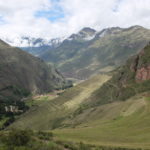
Plus they created a system of granaries and storage bins on the hills not so useful for growing plants, along with those commercial roads to speed – well facilitate – the transfer of food around the empire by foot or llama.

One of the best preserved of these terrace and storage sites, and display of the technology, is at Pisaq, in the Sacred Valley near Cuzco, as well as Ollantaytambo farther on the way toward Machu Picchu.
The Quechua even applied these water-channeling techniques to the delivery of fresh water into homes and sacred buildings.
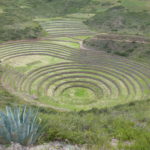
For us, the most revealing site about the Quechua skill in agriculture was Moray, tucked near picturesquely patterned salt mines, between Cuzco and the Sacred Valley. Here those we should call agronomists conducted scientific testing and modification of food plants for the many eco-systems of the empire.
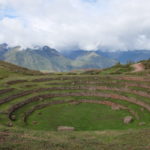
At Moray, three large elliptical hollows demonstrate their technological sophistication. In the largest of these, 20 ringed terraces – each about the height of a person – had been carved into the natural cup between hills, with additional terracing rising up even higher to about 3800 meters. The elliptical terraces mimicked 20 gradients of microclimates, ranging from the tropical at the bottom to the highlands, with the hills adding Andean altitudes. In this way, the Inca’s scientific farmers could test the survivability of plants in different ecologies, or gradually – terrace by terrace – adapt plants that could thrive at one ecosystem to different altitudes and humidities. Moray amazed us with its simple, but masterful concept, and with its green beauty even today.
Pachakuti – In the end
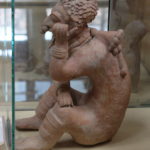
The Spaniards – and time – did what they could to efface the Inca civilization, first of all by breaking their cities apart to find more of the gold that adorned imperial structures and statuary. Then, secondly, to impose their dominance tangibly by dismantling the imperial stonework, re-using it, and building their headquarters or churches, such as the Dominican church in Cuzco. Enslavement, taxation and religious conversion did the rest to control the people until the revolutions of the 1820s.
In their zeal for conversion of souls and exploitation of resources, and in their arrogance, the Spaniards weren’t much interested in gaining from the wisdom of the local tribes, with perhaps the exception of the Jesuits who came over a hundred years later. Yet, the native craftsmen proved useful to them, capable of working quickly, if less precisely for their impatient masters, in brick and stone like their ancestors, and also quite adept in visual and musical artistry.

The best artisans were recruited to decorate the churches, to sculpt stone adornments to exteriors, to paint canvasses and frescoes, to carve wooden altars and statuary, for churches on European models. Multiple styles evolved, often associated with different cities. Early on, the chiaroscuro style was widespread, for example and then came the later lighter style of early baroque called Cuzco style. In their work within Peru and Bolivia, the natives boldly wove reminders of the old beliefs into their artistic contributions, such as references to the sun and moon gods, to pachamama, or virucocha. Or they would add local foods, flowers and animals – as in a Last Supper painting in the Cuzco Dominican Cathedral . The saints – especially the Virgin Mary – and other biblical figures often have distinctly indigenous features or darker skins. The Spanish priests even encouraged this, reinterpreting pachamama as Mary herself, mother nature in local dress.

Revolution and the creation of republics eventually eliminated the Spanish rule, though not its religion, nor the contentious, malicious heritage of colonialism. Until the mid-70s, natives suffered significant prejudice and had few rights. Newly emerging, however, is an enormous pride in the glorious pre-colonial indigenous heritage of all the Latin American countries, especially in Peru and Bolivia because of the Incas. Nor have the old religions really disappeared: something like 10% of the Peruvian population practice elements of the Inca religion and even more mix their indigenous beliefs into their Catholic devotion. In Bolivia, up to 60% hold fast to ancient rituals and celebrations, the inheritance of their tribal past. Outside the main cities, most are bilingual as well as mixed in religion, speaking Quechua or Aymara or other old tongues along with the Spanish they retained as a common language. Traditional dress is much more prevalent than among villagers in other continents we have visited.
The world of the Incas – and of the other tribes of the empire – continue to re-emerge from the past, perhaps honed by a new pachakuti.
(Also, for more pictures from Peru or Bolivia, CLICK THE COUNTRY NAME to view the slideshow at the end of each’s itinerary page.)


